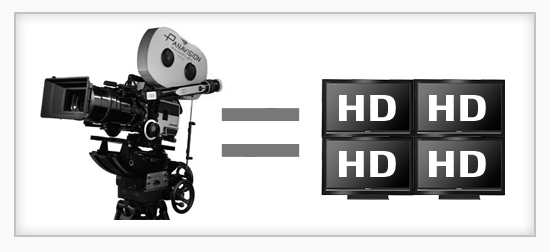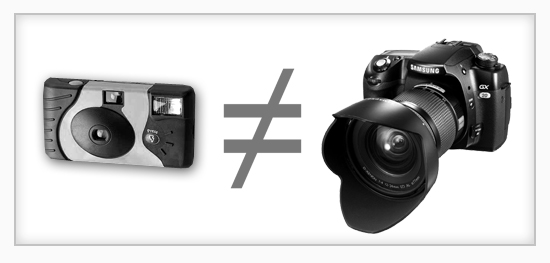The Democratization of Digital Cinematography: Why Low Budget No Longer Means Low Quality
Consumer video has come a long way in the last thirty years. In the early 80s, dads slung Volkswagen-sized camcorders over their shoulders to record the play-by-plays of little Suzie’s birthday party. The resulting video looked as though Suzie herself drew it frame-by-frame in crayon and then poured glue and sand over the whole thing. Many a childhood was documented in this fashion. And since no dad of that time ever discovered the bright red off button on the back of the camera, the final experience was a three-hour roller coaster ride depicting Christmas morning, 1985.
The point is that back then the disparity between techie dad’s cinematic equipment and that of the Hollywood studios could not have been more extreme. Today though, there is a much different landscape. Digital technology is rapidly catching up with the high-end quality of film and frankly, it’s likely to surpass it.
For those of you who may not be aware, 35 mm film has long been the standard in Hollywood. This is due to its extraordinary image quality. Since film is a physical medium, a direct comparison to digital is never precise, but as an illustration, a frame of 35 mm film can be scanned at roughly twice the resolution of today’s standard high definition (1080P). That’s like taking two HDTVs and putting them next to each other and then stacking another two on top, turning all four into one giant screen. Please refer to my scientific equation below:

Until recently, video cameras couldn’t even dream of resolutions like this. The difference was further increased by the fact that film cameras used high-quality lenses and manual controls that weren’t available for consumers. As a result, even the most creative home movies and low-budget TV commercials looked amateur, simply because of the outrageously high cost of professional-grade equipment.

This decade has seen remarkable changes that are closing the quality gap between video and film. In 2006, a new company released the Red One, the first digital cinema camera with comparable resolution to that of 35 mm film at a fraction of the cost. To date, a large number of Hollywood productions have opted to shoot digitally with the Red camera. Audiences didn’t even notice the difference.
Meanwhile, digital SLRs have arrived with full video capabilities allowing users all the manual controls and lenses they’re already using for still photography. These digital SLRs can be purchased for under $2,000. Compare that to the multi-million dollar HD set-ups used to shoot the Star Wars prequels. It truly is incredible how inexpensive high quality has gotten in such a short time.
I can hear the critics now. “But film can’t be replaced.” “It just has a certain feel to it.” “It’s so warm.” “It’s magical.” Blah blah blah. Being a huge film fan, I used to feel this way to some extent, but recently I’ve been convinced that digital tricks and effects can mimic nearly every “look” right down the to the magical warmth and color tones of 35 mm.
This is music to the ears and eyes of low-budget video geeks and companies who are looking for ways to cut advertising costs. Now ideas, creativity and execution are king. This is great for agencies like ours, since we’re able to worry more about the marketing concepts and messages of our TV commercials and less about the capabilities of the technology itself.
Now this doesn’t necessarily mean that today’s techie dad will have the skills to record Christmas morning 2010 without inducing nausea in the viewer. If anything, the crystal clear video will make the rocky experience worse. But it does mean that we budget-constrained marketers have no excuse for not taking advantage of the low price of high quality.